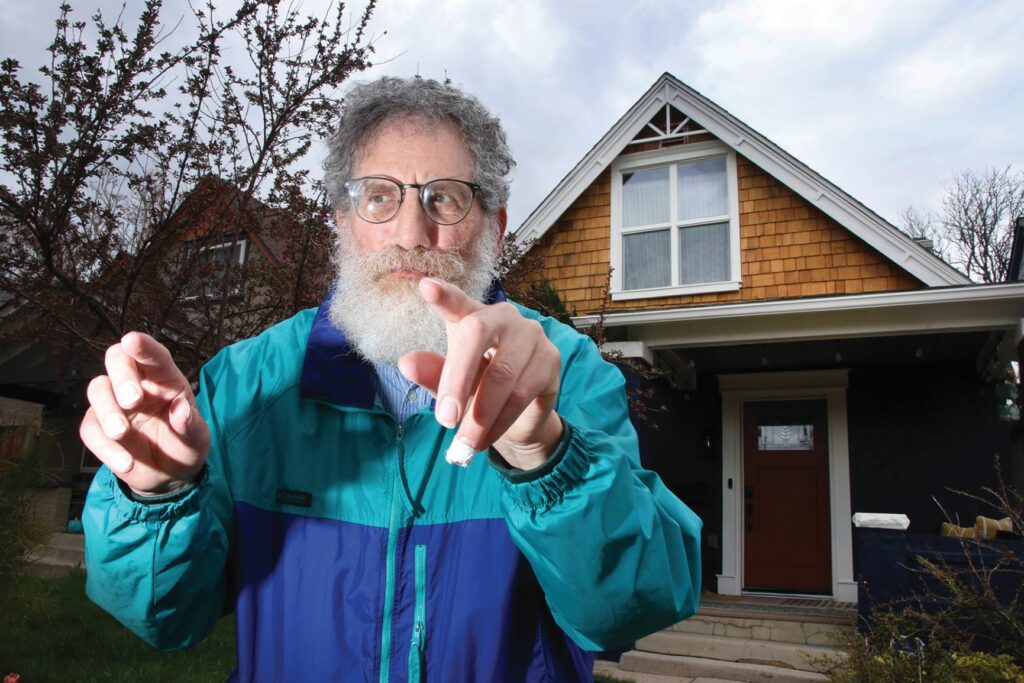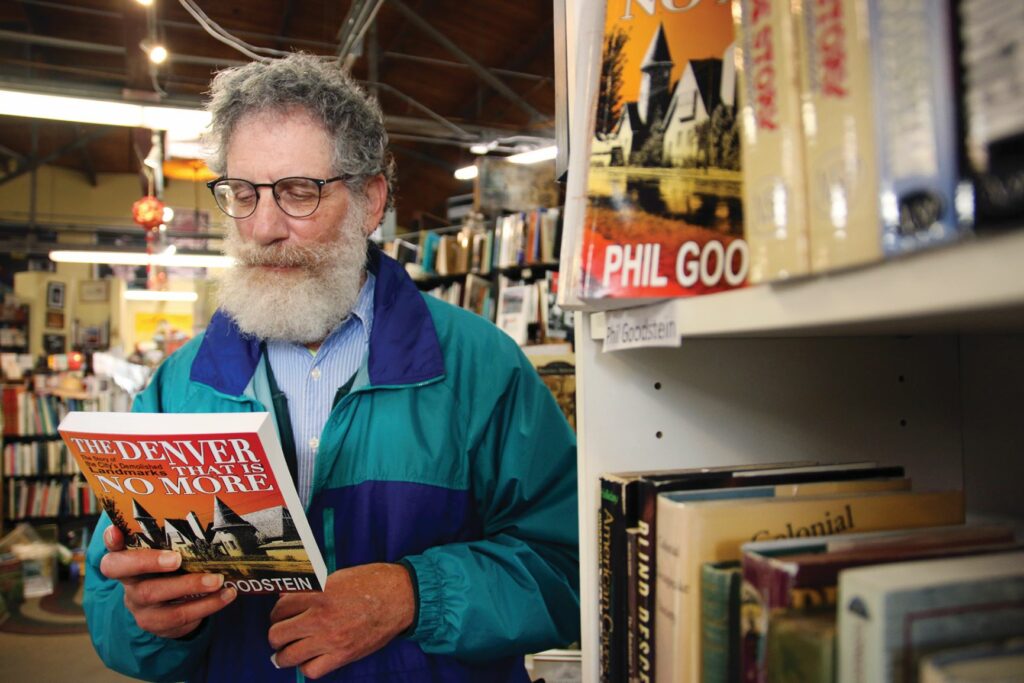
Animatedly recalling the story of Denver’s own “Spiderman” or giving tours about the “ghosts” that dwell in the Mile High City, Phil Goodstein has extensive knowledge of all of them.
Goodstein has been giving history tours since 1986. He has written more than 25 books about the city’s past and has a personal photo archive of the places he chronicles.
With his long, red-and-white beard and oscillating speech that gives him a professor’s demeanor, he is a local laureate of what is no more.
“I have a PhD in useless information,” Goodstein said. “When I got the degree, I really couldn’t use it, unless you want to hear me start lecturing on East European history and all sorts of other arcane subjects of that.”
Books in tow, eyes dilated behind horned-rim glasses, Goodstein sat down with The Denver North Star to speak about his tours, how they began and how they are resuming as COVID-19 restrictions become more relaxed.
After getting his degree, Goodstein said he pursued freelance journalism, writing articles about “how Denver works itself” and teaching adult education summer classes.
“I figured, let’s do something to get outside, and combined with that I thought the existing tours of Denver were hideously rotten and was convinced I could do a better job,” he said.
About the time Goodstein said he started the walking tours, the director of Colorado Free University recommended he should give a tour on the seamy side of Denver, then the idea was pitched to him to do a class about the ghosts of Denver.
“And the enrollment is incredible before I really have a chance to figure out what am I doing,” Goodstein said. “I find out there are such gaps in terms of what all of this is about. I have to literally write the book on the subject.”
He did. “The Ghosts of Denver: Capitol Hill” was published in 1996, and for 15 years he said special ghost tours called Haunted Halloween were his major “money-maker.”
“We would rent a bus, originally double-deckers, we would fill it twice a night with 70 people for three … four nights in a row,” Goodstein said. “Every year, something would go wrong on that tour. Suddenly there would be some accident, some traffic jam, the bus would break down … there would be a bunch of drunken rowdies another year.”
“That tour gets very badly hit when suddenly the Rockies go to the World Series in 2007, and it never quite recovered from that in popularity. It was one of those things, I wasn’t enjoying it, doing two tours a night.”

Goodstein said he replaced those tours with the ghost walking tours, which he conducts between March and October.
But when the COVID-19 pandemic forced him to cancel the tours, in addition to a three-month illness last summer, Goodstein came to a realization. He needs an apprentice.
“Maybe I’ve had the durability to keep going or the stupidity to not say ‘enough already’ and end it,” Goodstein said. “As much as anything, the goal there was to see whether two people … had the wherewithal of that and other such things.”
Goodstein said he continues to do the tours for income, but also because he doesn’t want them to disappear. The qualifications to be taken under his wing would be someone who can recall facts easily and is a good storyteller, he said.
“You need to be out there taking notes to write these things down, and here I am telling the story, but there’s a lot more and often a lot of these stories are in my books,” he said, adding he refreshes his own memory before embarking.
One such tour he could use help with is The Seamy Side of Denver, which he has been giving since 1989.
Part of the tour explores the industry of semi-legal gambling that took place within the city’s leading bordello downtown. Goodstein said there were some interesting murders that he highlights while discussing the early years of the city.
Latest Book
Goodstein also released a new book in May, “The Denver That Is No More: The Story of the City’s Demolished Landmarks,” which features stories about old schoolhouses that have been demolished, and he recounts the fight to save North High School in the 1980s.
The book talks about the Roger Woodbury Mansion near West 26th Avenue and Alcott Street, which has also been demolished, and the old St. Anthony’s Hospital at West 16th Avenue and Raleigh Street, as well as Manhattan Beach, the amusement park that was located near the northwest shore of Sloan’s Lake and more North Denver haunts of yesteryear.
Goodstein said he was commissioned by a publishing company in the United Kingdom to write a series of books on historic buildings that have been demolished in London, Chicago, New York, and Denver, but he said that deal fell through. He returned to finishing the Denver edition recently under New Social Publications.
The book can be found at West Side Books on 32nd Ave., BookBar on Tennyson St, and other local bookstores.
Goodstein’s Upcoming Tours
· 11 a.m.-1 p.m. May 16: “The Ghosts of Cheesman Park.” Meet at the main entrance to the park at 9th Avenue, half a block west of Race Street. Cost: $20
· 7-9 p.m. May 22: “Ghost Walk.” Meet at the statue of the Indian along the east lawn of the Colorado State Capitol Building, between Colfax and 14th Avenue. Cost: $20.
· 2-3 p.m. May 23: “The Denver That Is No More.” This is an informal gathering about Goodstein’s books, focused on his latest publication. Broadway Book Mall, 200 S. Broadway. Cost: Free.
· 6-8 p.m. June 7 (PENDING): “The Seamy Side of Denver.” Meet at the flagpole at Union Station, 17th Avenue and Wynkoop Street. Cost: $20.
· 6:30-7:30 p.m. June 13: “The Legacy of the 1965 Platte Flood.” Meet on the “river side” of the REI Building, 14th Street and Platte Street.
More information about Phil Goodstein’s tours can be found at darksideofdenver.com.
Eric Heinz is a freelance journalist based in Denver who most recently covered Los Angeles City Hall for City News Service.

Be the first to comment